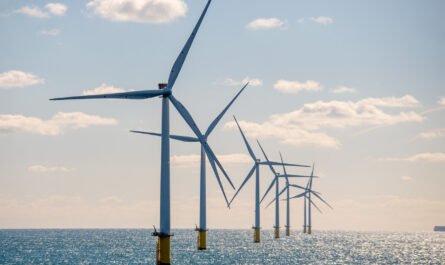Directional drilling has revolutionized the oil and gas industry by enabling access to resource reserves that were previously impossible to reach using traditional vertical drilling methods. As reservoirs become more challenging to tap into, directional drilling services have become increasingly important for safely and efficiently placing wells in complex locations.
What is Directional Drilling?
Directional drilling refers to any drilling process where the wellbore is purposefully deviated from vertical to reach a target location. Using specialized drilling equipment like mud motors and steering tools, directional drillers are able to guide the drill bit along curved trajectories both horizontally and vertically. This allows wells to be drilled at angles ranging from slight deviations of a few degrees to horizontal wells drilled parallel to the surface. Directional techniques are commonly employed to circumvent existing obstacles, access drainage areas peripheral to existing surface infrastructure, or develop reservoirs underneath environmentally sensitive areas.
Benefits of Directional Drilling
There are numerous production and economic advantages enabled by directional drilling services. Horizontally drilled wells expose more of the reservoir face to the wellbore, increasing drainage and ultimate recovery of reserves. Multiple lateral wells can be drilled from a single surface location, reducing surface footprint and environmental impacts. Directional techniques allow reservoirs below roads, cities, and bodies of water to be economically developed. Field recovery can be maximized through optimized well placement, bypassing natural fractures or zones of high permeability in favor of even drainage. Health, safety, and environmental risks are reduced by minimizing the number of required surface locations and associated transport infrastructure.
Technological Advancements
Continued evolution of steering tools, mud motors, drilling fluids, measurement-while-drilling instruments, and geospatial tracking systems have pushed the capabilities of directional drilling to new frontiers. More robust, high-build mud motors allow for extended reach laterals up to several miles in horizontal length. Increased drilling efficiency and tighter wellbore tolerances result in significant project cost savings. Real-time telemetry from measurements-while-drilling allow wellbore position to be continuously monitored and adjustments made to keep the well on its planned trajectory. Advanced loction systems enable operators to land long laterals within narrow targets for optimal reservoir exposure. These technologies enable ever more sophisticated and complex well architectures to maximize recovery.
Multi-Lateral Drilling Applications
A specialized application of directional drilling employs multi-lateral technology to access multiple pay zones or drainage patterns from a single surface location through strategically placed lateral branches. Multi-dips, fishbones, and “Y” lateral configurations maximize returns while preserving surface assets. Multi-lateral projects require meticulous planning and execution from directional drilling specialists. Multiple branches hundreds or thousands of feet in length must be landed precisely within narrow targets many thousands of feet below ground. Even the slightest navigational errors could jeopardize the entire project and reservoir drainage objectives. Successful multi-lateral completions rely on proven directional control and robust measurement technologies.
Offshore and Deepwater Applications
As exploration and production activities push into deeper offshore regions, directional drilling plays an even more pivotal role. Complex well architectures are required to access reservoirs many miles below the sea floor from fixed platform or subsea completion infrastructure. Extended reach laterals up to 10,000 feet or more in horizontal displacement are drilled to maximize field recovery. In deepwater, narrow geomechanical operating windows and more challenging wellbore stability conditions demand precision drilling capabilities. The consequences of poor wellbore placement or loss of well control are amplified by the additional hazards and costs associated with offshore operations. Specialized directional drilling vessels equipped with top-drive systems and casing running BOPs are commonly deployed to handle the pressures and complexities of deepwater wells.
Directional drilling services have advanced significantly from early deviated well techniques. Continued technological improvements coupled with specialized directional drilling expertise have enabled oil and gas reserves previously considered inaccessible to be economically developed. With reservoirs becoming increasingly challenging both onshore and offshore, directional capabilities will play an even greater role maximizing global energy supply for decades to come. Close cooperation between operators, service companies, and directional drilling specialists holds the key to optimizing recovery from unconventional, depleted, and deepwater reservoirs through advanced drilling solutions. Directional control remains a critical technology enabling the future of oil and gas production.
*Note:
1. Source: Coherent Market Insights, Public sources, Desk research
2. We have leveraged AI tools to mine information and compile it


